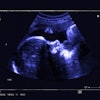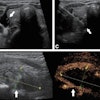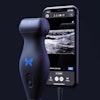
When radiologists interpret initial ultrasound studies in the emergency department (ED), fewer follow-up imaging studies are needed, according to research presented this week at the American College of Radiology (ACR) meeting in Washington, DC.
After reviewing more than 200,000 ED ultrasound events in Medicare data files, researchers from the ACR's Harvey L. Neiman Health Policy Institute found that ED patients with ultrasound studies interpreted by nonradiologists had an average of 1.34 additional imaging procedures performed over the next month, compared with patients who had their exams read by a radiologist.
"While point-of-care ultrasound has the potential to reduce additional and often more costly imaging, studies demonstrating this potential have been limited to narrowly focused clinical scenarios," wrote a team led by Dr. Van Carroll, a radiology resident at Brookwood Baptist Health in Birmingham, AL. "Our data demonstrate in the aggregate that when radiologists interpret the initial ultrasound examination, subsequent use of imaging resources was significantly less than when the initial ED ultrasound examination was interpreted by nonradiologists."
The e-poster received an ACR 2017 Gold Merit Abstract Award in the advocacy, economics, and health policy category.
The rise of point-of-care ultrasound
Nonradiologists are increasingly using point-of-care ultrasound to evaluate patients in the ED, leveraging ultrasound's advantages such as lower cost, no radiation exposure, and increased throughput compared with other imaging modalities. However, evaluation of this diagnostic pathway requires consideration not only of the benefits of point-of-care ultrasound in the ED, but also the potential effect on healthcare resources, according to the researchers.
As the number of downstream imaging examinations required to make the final diagnosis can be one measure of resource use, the research team set out to assess how many follow-up imaging studies were performed in patients who had their initial ED ultrasound exams interpreted by radiologists versus nonradiologists.
After searching Medicare data files from 2009 to 2014 to identify all patients who had received an initial ultrasound exam in the ED setting, the researchers determined if the study had been interpreted by a radiologist or a nonradiologist. Next, they summed up all further imaging events that occurred for each of those patients within seven, 14, and 30 days after the initial ED ultrasound exam, and compared the numbers for radiologists and nonradiologists.
Of the 200,357 ED ultrasound events, 163,569 (81.6%) were interpreted by radiologists and 36,788 (18.4%) were read by nonradiologists.
| Mean number of additional imaging studies after ED ultrasound | |||
| Initial study interpreted by radiologist | Initial study interpreted by nonradiologist | Difference | |
| 7 days after initial ED ultrasound | 3.17 | 4.25 | 1.08 |
| 14 days after initial ED ultrasound | 3.60 | 4.83 | 1.26 |
| 30 days after initial ED ultrasound | 4.30 | 5.65 | 1.34 |
The differences between radiologists and nonradiologists for subsequent imaging utilization were statistically significant (p < 0.01). After performing multivariate regression analysis, the researchers found no significant differences in comorbidities between the two groups.
They noted that the volume of subsequent imaging decreased over time, declining by 0.08 fewer imaging exams 14 days after the initial ED ultrasound study. That difference was statistically significant (p < 0.001). However, the differences in follow-up imaging between radiologists and nonradiologists persisted.
The researchers acknowledged a number of limitations in their study, including its reliance on billed fee-for-service encounters in the Medicare population, the lack of differentiation between community and academic institutions, and the lack of differentiation between exams that were performed and interpreted versus exams that were only interpreted by the provider billing Medicare. The study also didn't assess the situations in which a "limited" ultrasound exam performed by a nonradiologist led to more downstream imaging. The authors noted that some limited ultrasound exams may be performed in the ED without being billed to Medicare.
Possible explanations
While the causes of this difference in downstream imaging utilization aren't clear, potential explanations could range from a previously documented higher use of limited ultrasound examinations by nonradiologists to a lack of confidence in the interpretations of nonradiologists, according to Dr. Bibb Allen Jr., a co-author and chair of the Neiman Institute advisory board.
As resource use will be a critical metric in federal health reform efforts, further analysis is needed to elucidate the causes of this discrepancy, he said.
"Since emerging federal health reform includes cost and resource use as part of the Medicare Quality Payment Program, emerging patterns of care such as point-of-care ultrasound should include resource use in outcomes evaluation," Allen said in a statement. "Efforts toward improving documentation of findings and archiving of images as well as development of more robust quality assurance programs could all be beneficial."




















